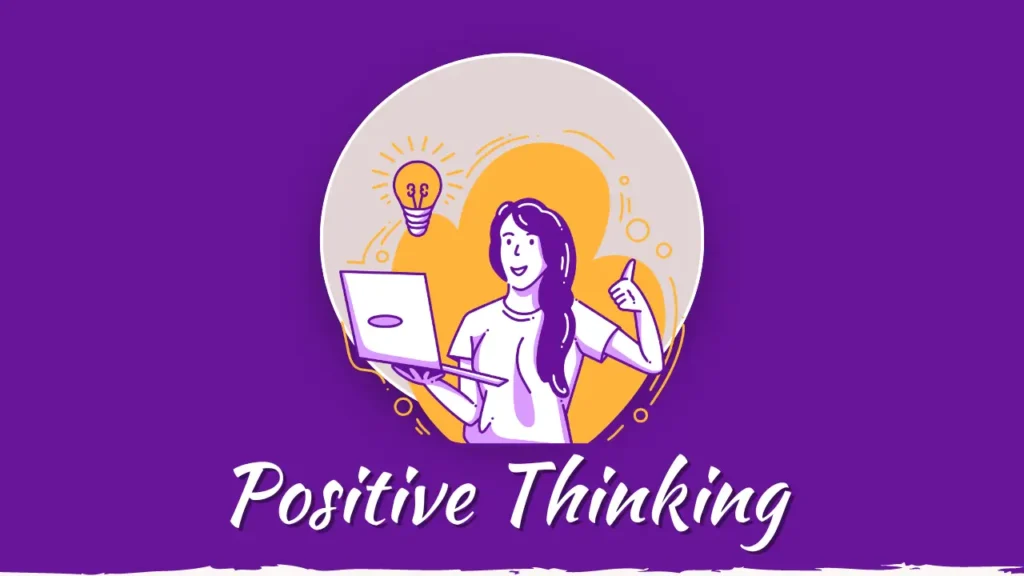The Power of Positive Thinking
Positive thinking is more than a mere mindset; it’s a powerful tool that can transform lives, boost health, and improve overall well-being. This article delves into the essence of positive thinking, exploring its benefits, practical strategies, and real-life applications. Let’s journey into the power of positive thinking and discover how to harness it for a better life.

Introduction: Understanding Positive Thinking
Positive thinking involves approaching life’s challenges with a constructive attitude, focusing on solutions rather than problems, and maintaining an optimistic outlook. It’s about believing in your ability to overcome obstacles and viewing setbacks as opportunities for growth.
The Science Behind Positive Thinking
Psychological Benefits
Positive thinking is deeply rooted in psychological well-being. Research indicates that optimism can:
- Reduce stress and anxiety by promoting a more relaxed state of mind.
- Enhance problem-solving skills by encouraging creative and flexible thinking.
- Improve mood and increase happiness by fostering a sense of hope and purpose.
Physical Health Benefits
The mind-body connection plays a crucial role in physical health. Positive thinking has been linked to:
- Lower rates of depression and anxiety.
- Improved cardiovascular health due to reduced stress levels.
- Enhanced immune function, leading to better overall health.
Longevity and Quality of Life
Optimistic individuals tend to live longer and enjoy a higher quality of life. Studies have shown that positive thinkers are more likely to engage in healthy behaviors, such as regular exercise, balanced diets, and avoiding harmful habits like smoking and excessive drinking.
Practical Strategies for Cultivating Positive Thinking
1. Practice Gratitude
Gratitude is a powerful antidote to negativity. By regularly acknowledging and appreciating the good things in life, you can shift your focus away from what’s lacking. Consider keeping a gratitude journal where you jot down three things you’re thankful for each day.
2. Reframe Negative Thoughts
Cognitive reframing involves changing the way you perceive and respond to negative situations. Instead of dwelling on the negatives, try to find a positive angle. For example, if you face a challenging project at work, view it as an opportunity to develop new skills rather than a burden.
3. Surround Yourself with Positive Influences
The people around you significantly impact your mindset. Surround yourself with positive, supportive individuals who uplift and encourage you. Engage in activities and join communities that promote positivity and personal growth.
4. Practice Mindfulness and Meditation
Mindfulness and meditation help you stay present and reduce the impact of negative thoughts. These practices encourage a non-judgmental awareness of your thoughts and feelings, allowing you to manage stress more effectively.
5. Set Realistic Goals
Setting and achieving realistic goals boosts confidence and fosters a sense of accomplishment. Break down larger goals into smaller, manageable steps, and celebrate each milestone along the way.
6. Use Positive Affirmations
Positive affirmations are statements that reinforce a positive self-image and encourage optimistic thinking. Repeat affirmations such as “I am capable,” “I am deserving of happiness,” or “I can overcome any challenge” to build self-belief.
Real-Life Applications of Positive Thinking
Personal Development
Positive thinking is a cornerstone of personal development. It empowers individuals to:
- Embrace change and view it as an opportunity for growth.
- Develop resilience and bounce back from setbacks.
- Pursue their passions and achieve personal goals.
Professional Success
In the workplace, a positive mindset can lead to:
- Improved job performance and productivity.
- Enhanced leadership skills and the ability to inspire and motivate others.
- Greater job satisfaction and a healthier work-life balance.
Relationships
Positive thinking strengthens relationships by:
- Promoting effective communication and conflict resolution.
- Fostering empathy and understanding.
- We are encouraging a supportive and loving environment.
Overcoming Challenges to Positive Thinking
Dealing with Negative Influences
It’s essential to recognize and address negative influences in your life. Whether it’s toxic relationships, a stressful job, or negative self-talk, taking proactive steps to mitigate these influences can significantly enhance your ability to think positively.
Building Resilience
Resilience is the capacity to recover quickly from difficulties. By building resilience, you can maintain a positive outlook even in the face of adversity. Techniques for building resilience include:
- Developing strong social connections.
- Practicing self-care and stress management.
- Maintaining a hopeful and optimistic attitude.
Practicing Self-Compassion
Self-compassion involves treating yourself with kindness and understanding, especially during difficult times. By being gentle with yourself and acknowledging your efforts, you can foster a more positive and supportive internal dialogue.
The Long-Term Impact of Positive Thinking
Sustained Happiness and Fulfillment
Long-term positive thinking leads to sustained happiness and fulfillment. By consistently applying positive thinking strategies, you can create a life filled with joy, purpose, and meaning.
Enhanced Coping Mechanisms
Positive thinkers are better equipped to cope with life’s challenges. They can navigate setbacks with grace, learn from their experiences, and emerge stronger and more resilient.
Positive Ripple Effect
Your positive attitude can have a ripple effect, influencing those around you. By modeling positivity, you can inspire and uplift others, creating a more positive and supportive community.
Conclusion: Embrace the Power of Positive Thinking
Positive thinking is a transformative tool that can enhance every aspect of your life. By cultivating an optimistic mindset, you can improve your mental and physical health, achieve personal and professional success, and build stronger, more meaningful relationships. Embrace the power of positive thinking and unlock your full potential.
Actionable Steps
Final Thoughts
Positive thinking is not about ignoring reality or denying challenges. Instead, it’s about approaching life with a hopeful and constructive attitude. By integrating positive thinking into your daily routine, you can create a more joyful, fulfilling, and successful life. Start today, and witness the transformative power of positive thinking.
Join the Conversation!
At Dream Hunters Club, we believe that success is a journey best shared with others. We’d love to hear your thoughts on the topic!
Your insights and experiences are valuable not just to us, but to the entire Dream Hunters community. Leave a comment below and let’s inspire each other! Don’t forget to subscribe to our blog for more motivational content and join us on social media for daily inspiration and updates.
Let’s keep the conversation going and support each other on our paths to success. Remember, every dream is worth chasing, and together, we can achieve greatness!






